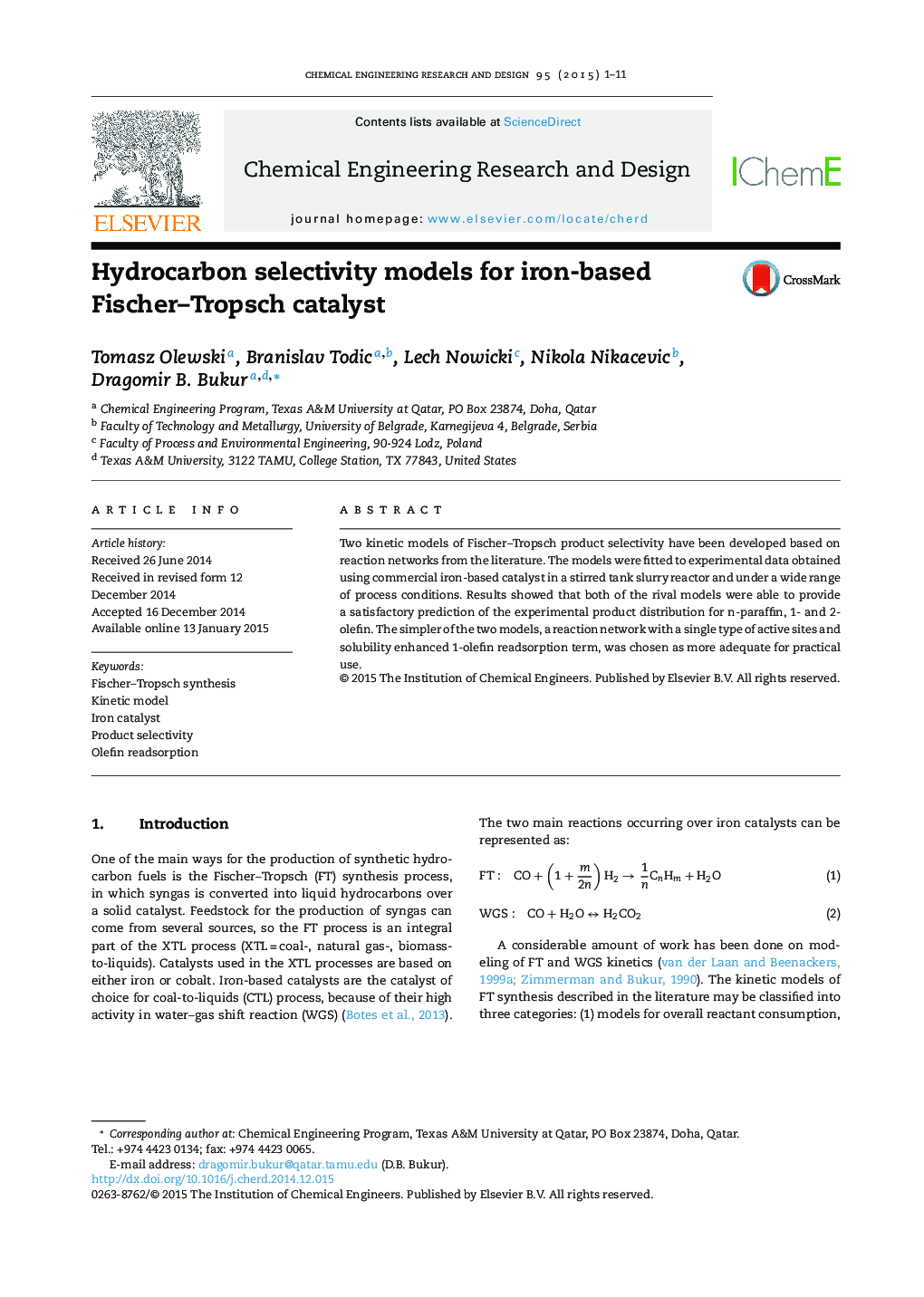| کد مقاله | کد نشریه | سال انتشار | مقاله انگلیسی | نسخه تمام متن |
|---|---|---|---|---|
| 620552 | 1455173 | 2015 | 11 صفحه PDF | دانلود رایگان |
• Selectivity model of FT synthesis for industrial iron catalyst was developed.
• Model considers formation of n-paraffin, 1-olefin and 2-olefin products.
• Experiments performed in a stirred tank slurry reactor over a range of conditions.
• Olefin readsorption and continued chain growth used to predict non-ASF behavior.
• Solubility enhanced olefin readsorption parameter c obtained from VLE calculations.
Two kinetic models of Fischer–Tropsch product selectivity have been developed based on reaction networks from the literature. The models were fitted to experimental data obtained using commercial iron-based catalyst in a stirred tank slurry reactor and under a wide range of process conditions. Results showed that both of the rival models were able to provide a satisfactory prediction of the experimental product distribution for n-paraffin, 1- and 2-olefin. The simpler of the two models, a reaction network with a single type of active sites and solubility enhanced 1-olefin readsorption term, was chosen as more adequate for practical use.
Figure optionsDownload high-quality image (122 K)Download as PowerPoint slide
Journal: Chemical Engineering Research and Design - Volume 95, March 2015, Pages 1–11
